The giant visual search engine app, Pinterest continues to offer robust tools to help every advertiser better track their ad performance. One of the most used tools is Pinterest Analytics. It helps advertisers better target their ads based on keywords, demographics, and interests to meet their business and marketing goals. Understanding Pinterest Analytics could lead to better results as the tool can be beneficial for many businesses.
In this article, we will help you understand how Pinterest Analytics works so you can utilize it better.
The Importance of Pinterest Analytics
Analytics are more than just a tool to help advertisers determine which pins and boards perform the best and which don’t. It is primarily a tool for understanding the performance of particular content. With the data provided, users can analyze the results, understand what type of content is working for their audience, and then come up with a better content strategy next time around that supports business and marketing goals.
Pinterest Analytics Overview
If you’ve signed up for a Pinterest Business account, you can access Pinterest Analytics for free. Once you have access to it, you can regularly monitor the metrics and performance of your pins and boards.
To access Pinterest Analytics, navigate to your business profile, then click on “Analytics” at the top left of your screen. See the photo below:
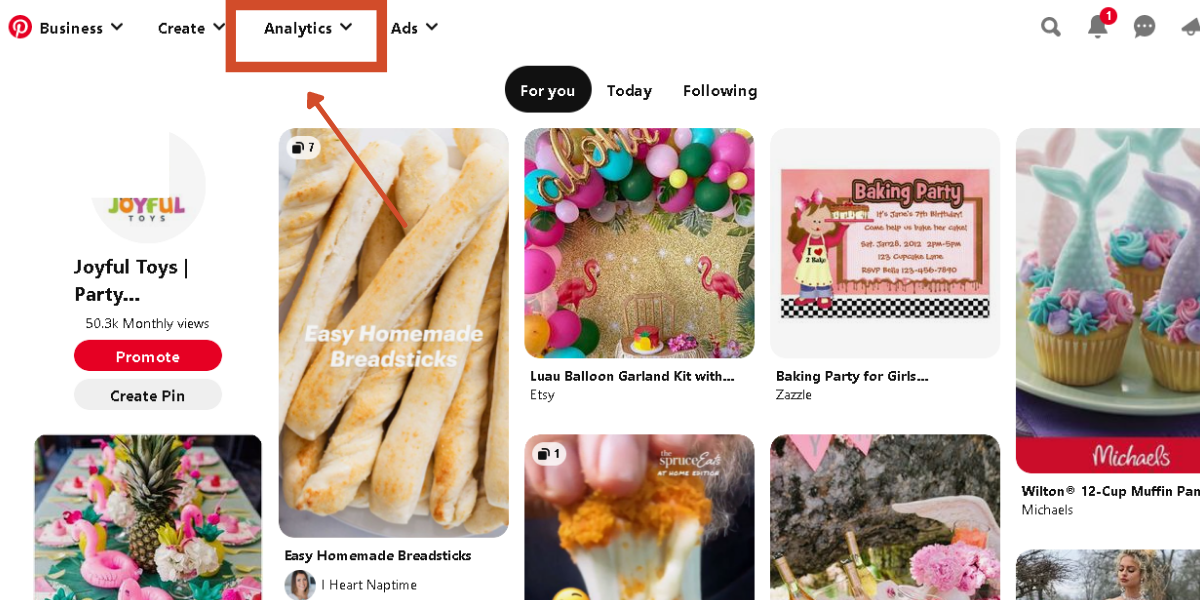
With Pinterest Analytics, you can see which Pins are getting the best engagement and impressions and driving the most traffic to your website. With the data provided, you can certainly better build a robust Pinterest strategy. To be able to take full advantage of this tool, you must first complete a few things:
Pinterest Analytics Requirement
Claim Your Websites
Get verified by Pinterest by claiming your website. If your website is verified, there are some benefits, like having a verified symbol (checkmark) next to your profile picture. See the photo below:

Another benefit is to have your profile photo displayed next to any Pin that has been pinned from your website, which boosts your brand authority and increases your chances of getting more followers. With this, you can better see any activity being done on Pinterest around your website, giving you insight into the type of content that is capturing your target audience.
To claim your website, go to Settings, then head over to the ‘Claim’ section in the left menu. Click the ‘Claim’ button for Websites.
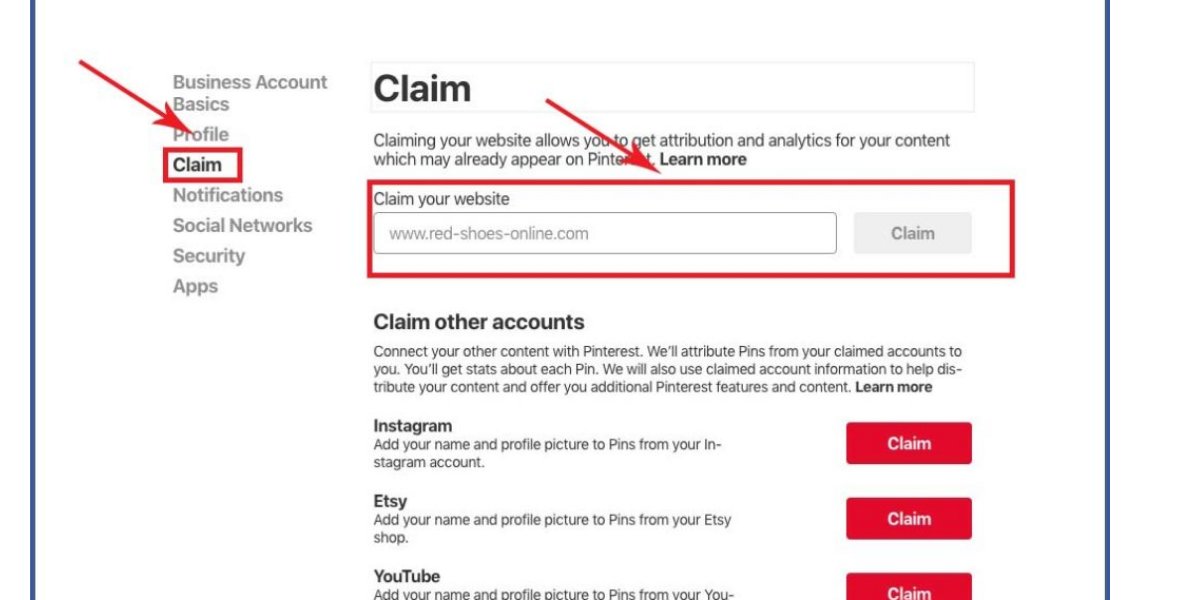
Note that only one Pinterest account can claim a website. Choose how you want to claim: Add a meta tag or Import an HTML file into your website’s HTML code.

Add a Save Button to Your Site
It is a good practice to add a Save Button to your site so that it would be easier for visitors to pin your images directly to their Pinterest boards. When they hover over an image, a Pinterest Logo will appear such as the example photo below.
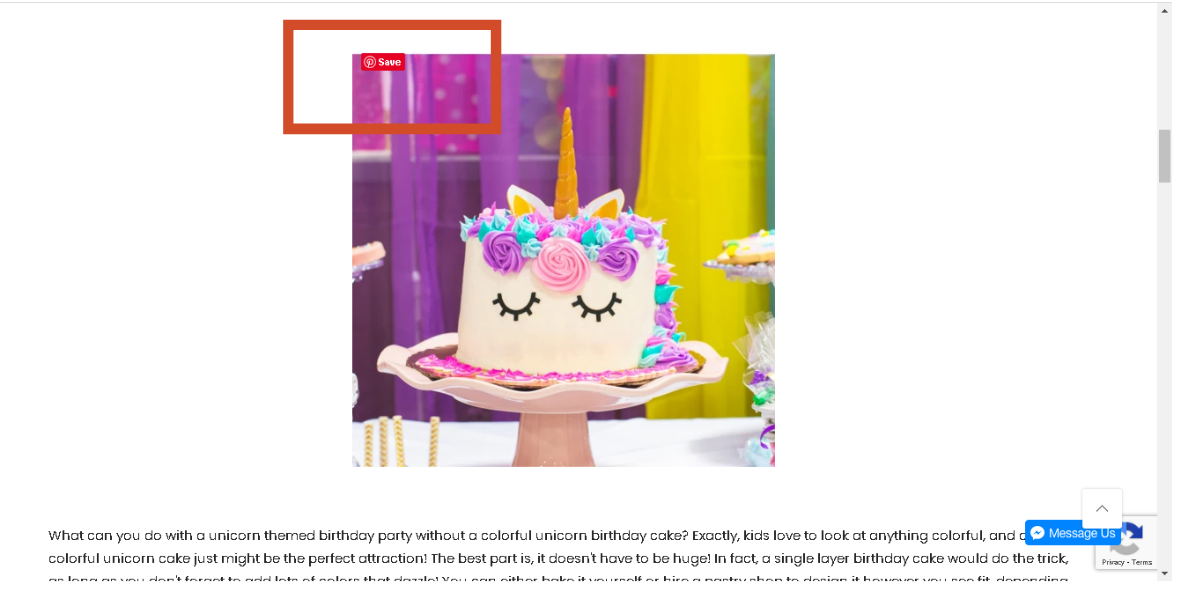
In addition, adding a Save button to your site allows site owners or and managers to track all of the Pinterest activity happening around their website.
Pinterest Analytics: Key Metrics
If you want to improve your content strategy, then you have to understand the Pinterest Analytics Key metrics. With the data provided by this tool, you can identify the content that appeals to your target audience the most.
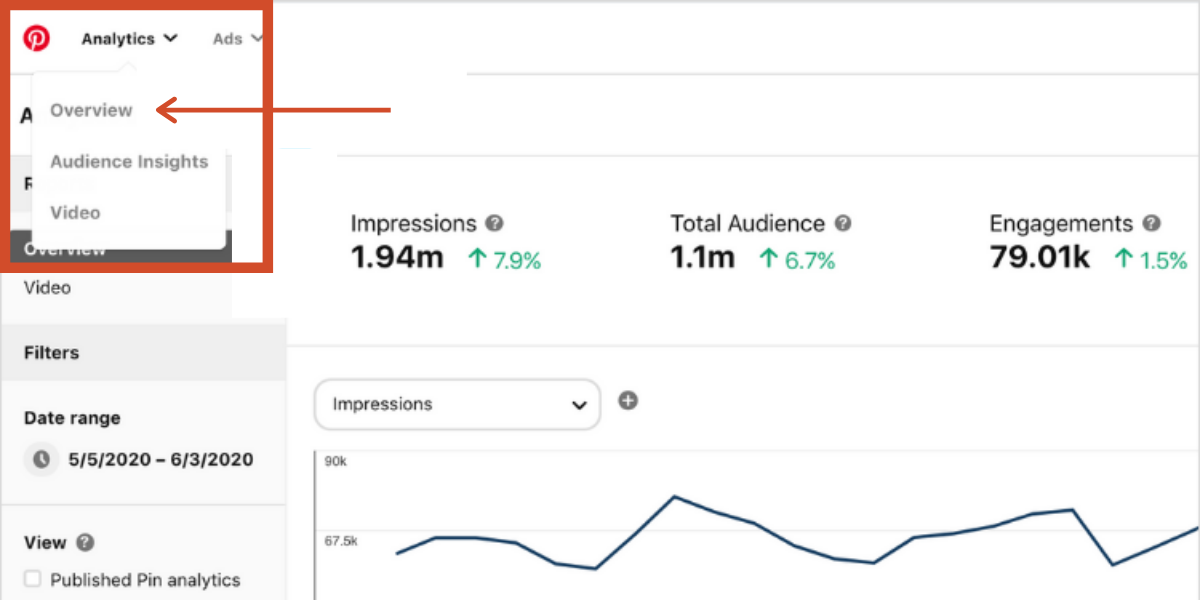
Hover over Analytics and in the drop-down menu, click Overview to check overall impressions, total audience, and engagement rate. Take a look at the key metrics to understand:
Pinterest Metric #1: Impressions

Think of impressions as views. When a Pin has a strong impression, it means it has been seen multiple times by Pinterest users. This means it has appeared in front of Pinterest users multiple times in search results, the home feed, and through another user’s boards.
Pinterest Metric #2: Closeups

Closeups refers to the number of times people click on your Pin, either because they find the image, layout, and text appealing, or simply intrigued by the content. The top performing pins have a large number of close-ups.
Pinterest Metric #3: Pin Click Rate

Your Pin’s click rate helps determine how well they are performing across Pinterest. If you get a high pin click rate for a day, that means your Pins were seen and clicked by a lot of users that day. That’s the importance of including seasonal and trending topics in your post.
Pinterest Metric #4: Saves
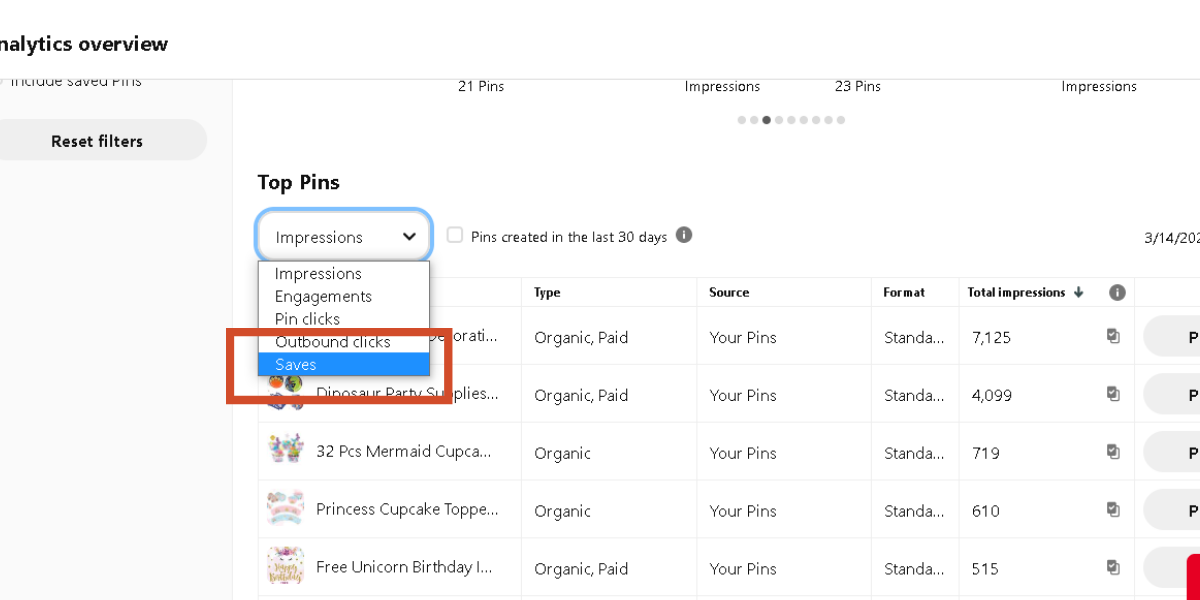
This is another key metric that lets you know the number of times a particular Pin was saved by a user to one of their boards. If you have valuable content, it will be saved many times by a lot of users. Especially if you have relevant, interesting, and valuable content, it has the potential to get good engagement which would result in better exposure of your brand.
Pinterest Metric #5: Save Rate
Your save rate shows the total percentage that a Pin was saved by users over a given time period. You’ll know your content strategy is working when you earn a higher save rate.
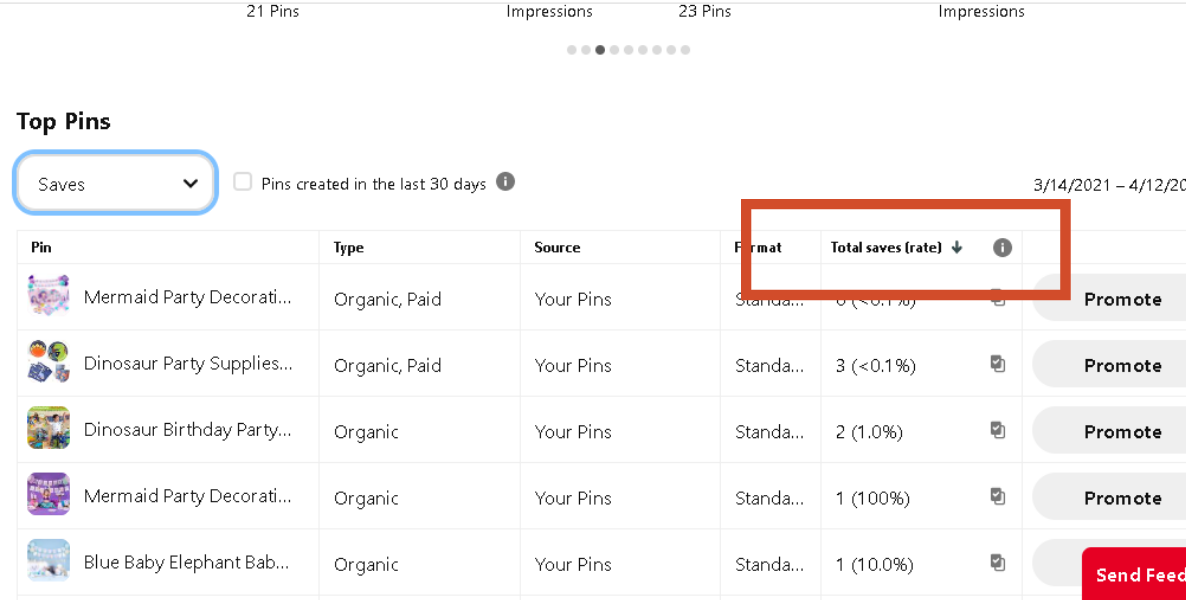
You can refer to your top performing posts as the basis for your future posts or repeat the same theme and keywords again and then track the results.
Pinterest Metric #6: Outbound Clicks
Outbound clicks refers to the number of times people clicked on the website from your Pins. If you want to increase traffic to your site, this is one of the key metrics to watch out for.

Analyze which Pins get the most clicks and note the type of content they contain. Don’t forget to add a Call to Action at the end of your Pin description to encourage people to visit the link.
Pinterest Click Tracking
There are different ways you can track your Pinterest clicks:
- Third-party Tracking: Track Pin clicks, ads performance, and Pinterest activity in another platform or third-party URLs.
- Dynamic Tracking Parameters: Collecting additional information from Pinterest on a click for campaign tracking purposes.
Pinterest Metric #7: Outbound Click Rate
Your Outbound Click Rate works similarly as your Close-up Rate and Save Rate, in which it measures the performance of your link clicks over a specific period of time.
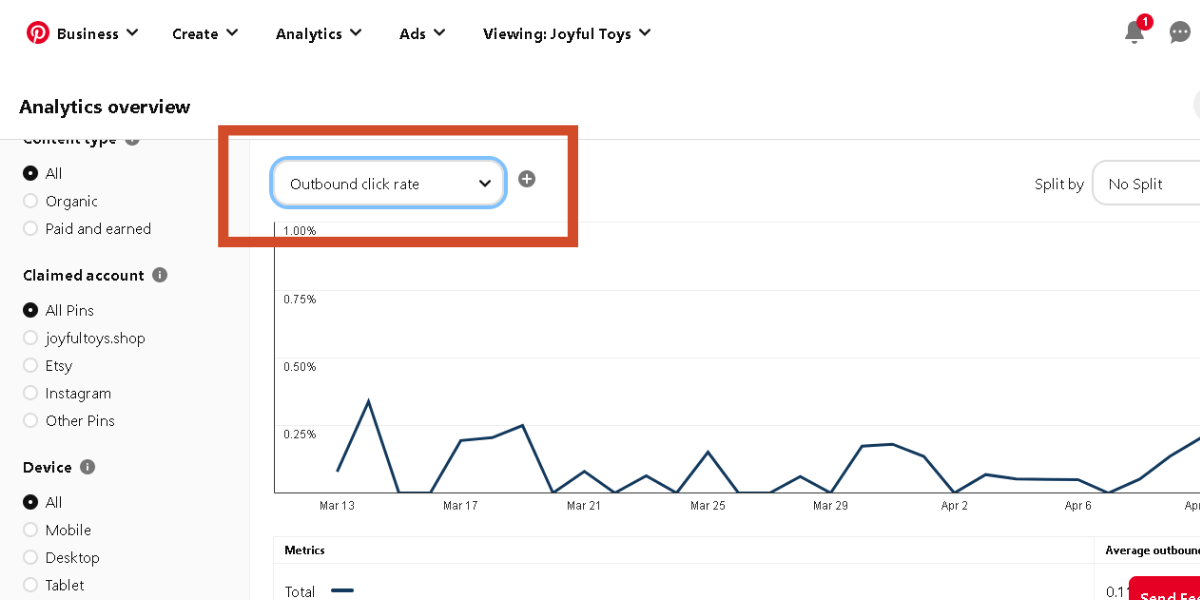
If your content is valuable, it’s natural for your Outbound Click Rate to spike. On the other hand, if there is a downward slope, you may need to re-analyze your content and recheck some important variables, such as keywords used, pin design, and built-in calls to action.
Pinterest Metric #8: Total Audience
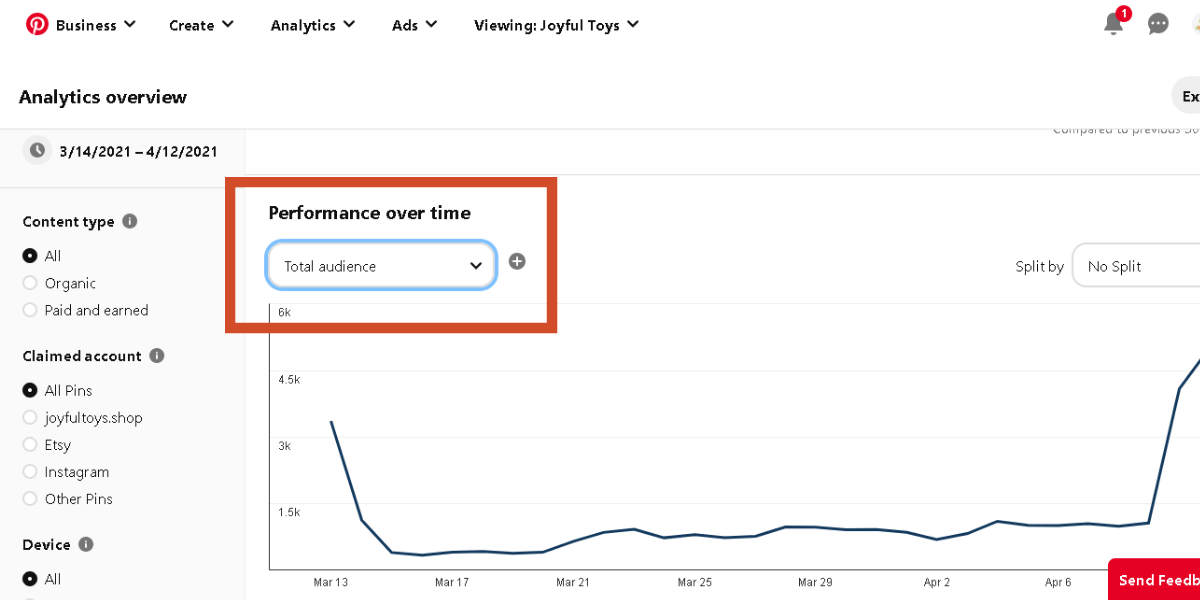
Your total audience calculates the total number of times your content appeared to unique users for each day in your preferred data range.
Pinterest Metric #9: Monthly Total Audience
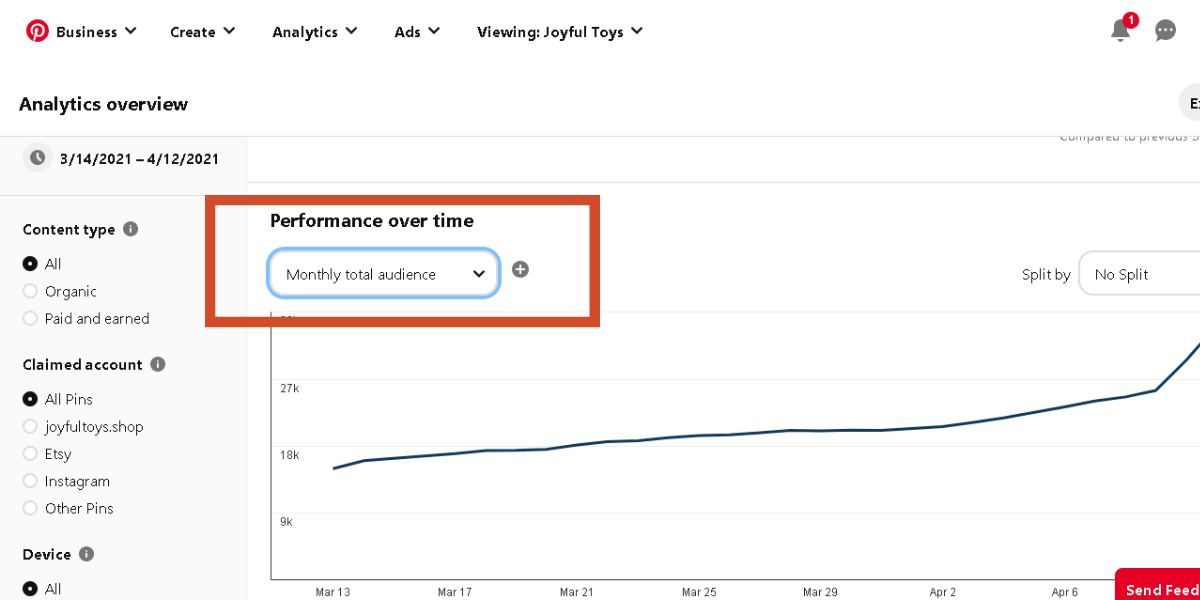
On the other hand, your monthly total audience calculates the total number of times your content appeared to unique users monthly (30- day period).
Pinterest Metric #10: Engaged Audience
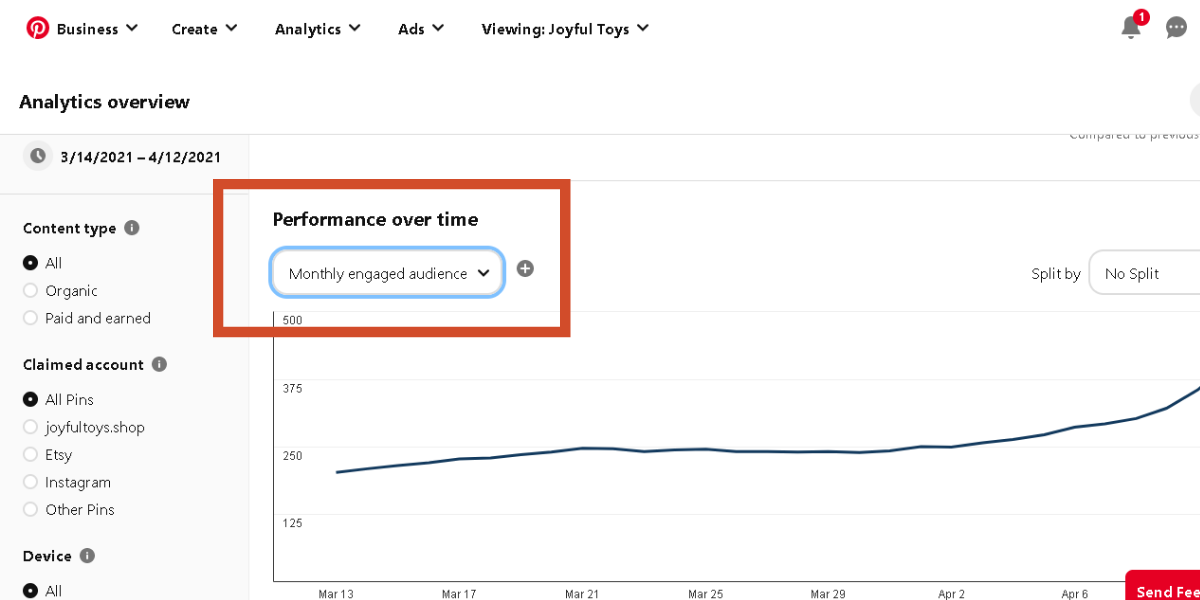
Users who want to know the total number of daily content interactions within a specified date range will need to click “Engaged Audience”.
Pinterest Metric #11: Monthly Engaged Audience
If you want accumulative engaged audience data over a 30-period of time, all they need to do is to click “Monthly Engaged Audience.” These tools are useful for tracking the performance of your Pinterest content strategy.
Pinterest Metric #12: Top Pins
Your top pins are basically your best-performing pins over a one month period. The data is based on the number of saves, engagements, impressions, link clicks, and close-up rates.

With Pinterest analytics, you can have a comprehensive overview of your top pins and see how well they are performing. You can then gather and analyze the data provided to have basis on your next month’s Pinterest content strategy. You will also be surprised to see that some of your old pins are still performing well, giving you insights on what your target audience really wants.
Pinterest Metric #13: Top Boards
Pinterest Analytics not only displays your best Pins but also includes your best performing boards. Since Pinterest boards are essential to growing your business, they are seen as a key metric that will help you determine which ones are popular, in terms of engagement, clicks, and saves among your target audience.
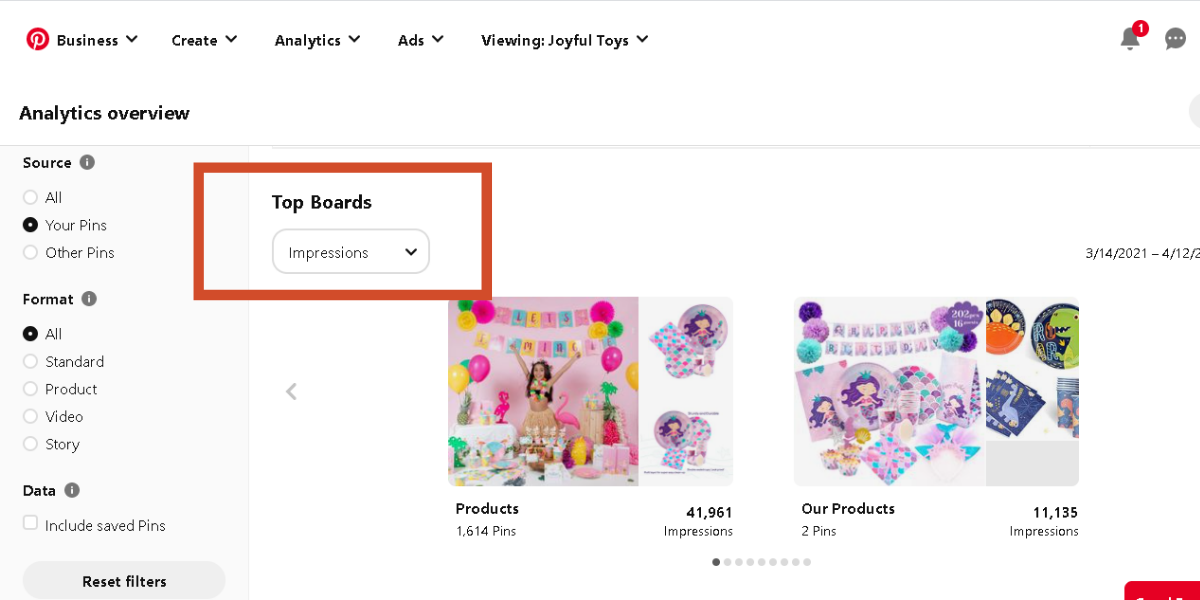
Once you have determined your top-performing boards, you now have an idea on which boards you should keep pinning to. Likewise, you’ll get an idea of what kind of content your audience is looking for. Make sure you understand How to Make Pinterest Boards for Business.
Pinterest Analytics: Audience Insights
Audience Insights is another important component that you can find on Pinterest Analytics, which gives users insight into what interests their target audience based on their behavior, like searches and saves.
To view your Audience Insights, go to the Analytics tab, and in the drop-down menu, choose Audience Insights.

You can adjust the data range and audience, either Engaged Audience or Total Audience to see the data. Below, you can also see the most popular categories and interests for a specific audience.
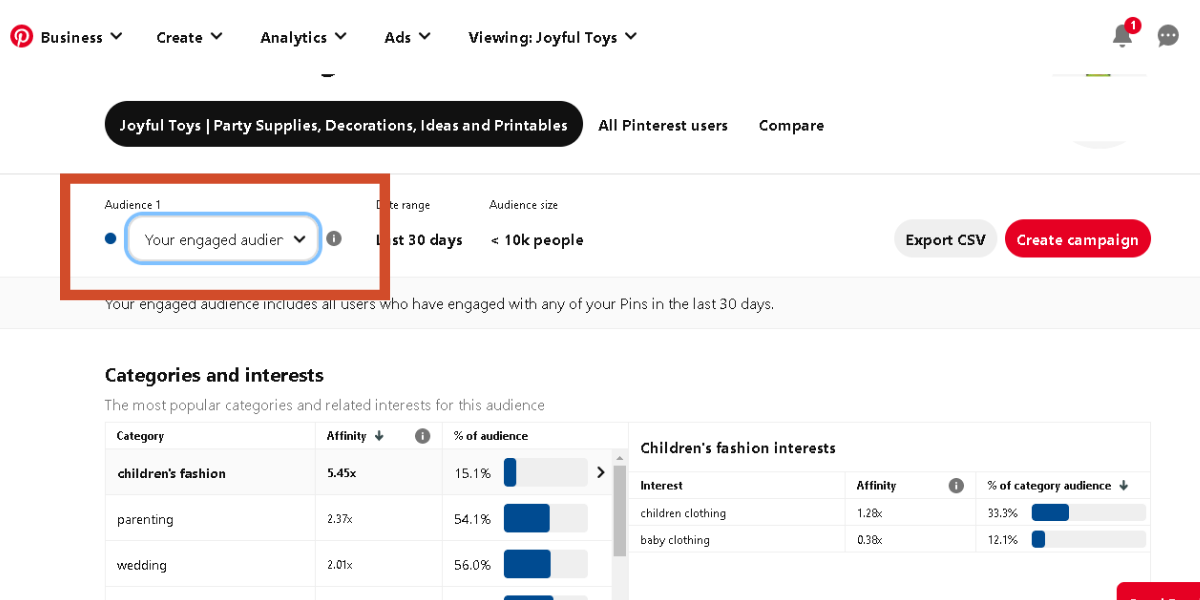
If you click on “Your Engaged Audience”, you’ll see a data result that measures the number of users who have engaged with one of your Pins in the last 30 days.
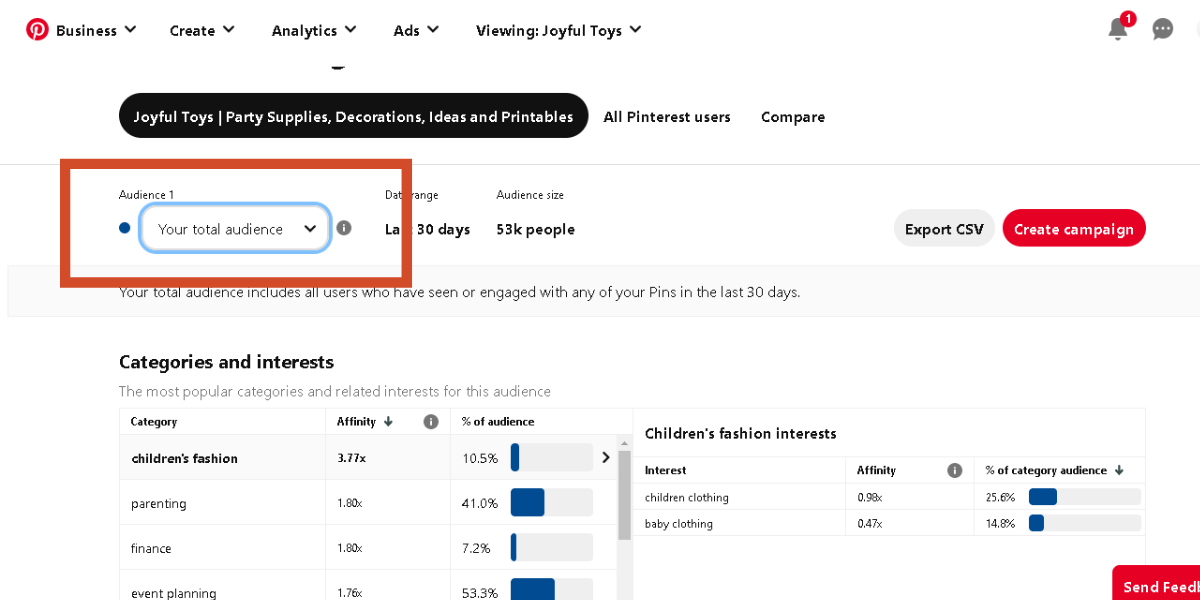
If you click on “Your Total Audience”, you’ll see a data result that measures the number of users who have seen or engaged with any of your Pins in the last 30 days. Results vary based on categories, interests, age, location, gender, etc.
Pinterest Analytics for Video
If you go to the Analytics tab, you can find in the drop-down menu a section named “Video”. Since users can also pin videos to their accounts, it is essential that they are also tracked to show whether the content of the videos is performing well or not.
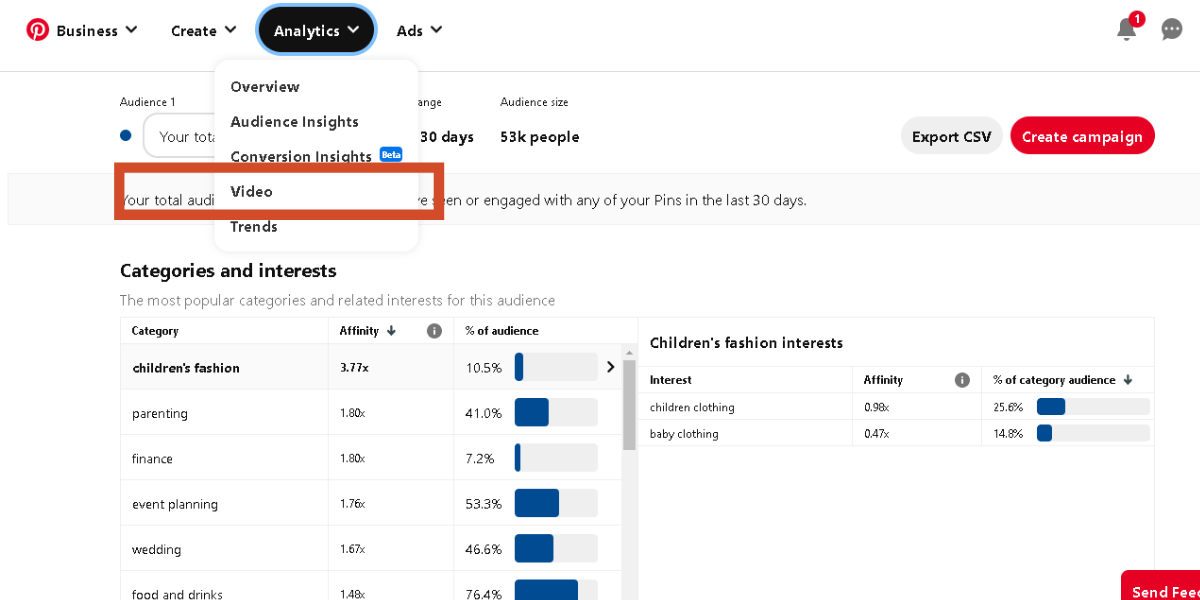
In this section, you can find the number of views, saves, link clicks, and total watch time a video has made over a specified period of time.
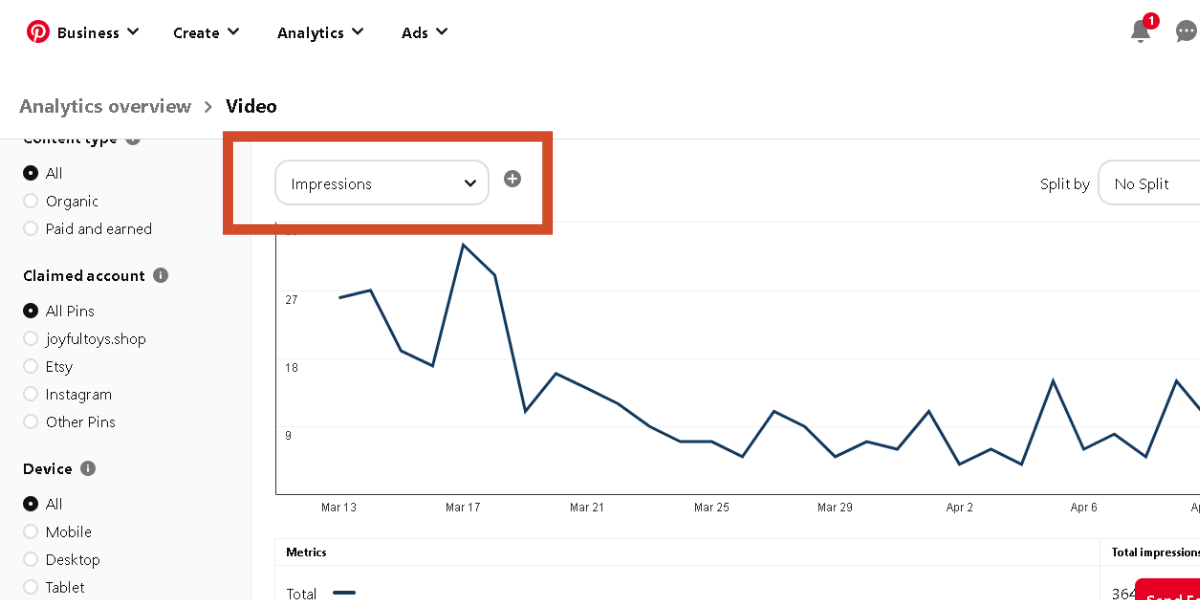
Like your Overview Analytics, you can filter and sort data by organic pins, device, impressions, records, clicks and more.
Conclusion
Now that you understand what Pinterest Analytics is based on its key metrics, you can better manage your content and create a robust Pinterest marketing strategy that works! Regularly monitor your Pinterest Analytics data to know which strategy to adjust or review. With a comprehensive overview of the performance of your Pins and Boards, it would be easier to reach your business goals in no time!


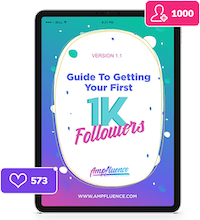

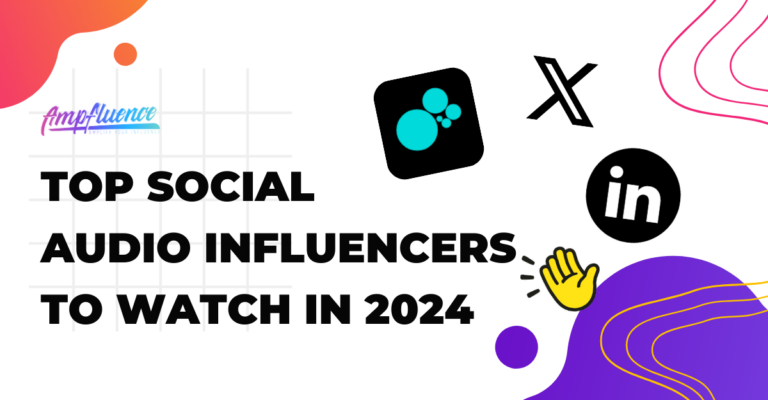




3 Responses